The Business of Online Education: A Deep Dive Into Udemy’s Financials
Discover how Udemy makes money, its different segments, instructor payouts, revenue growth, margins, and more.

Udemy operates as an online course marketplace where anyone can launch a course. Think of it as an Amazon for online learning.
Since its establishment in 2010, Udemy has amassed over 200,000 courses on an extensive range of subjects, from coding and cooking to pseudoscience (yes, pseudoscience). It’s a popular choice among millions of learners worldwide, accumulating 125 million enrollments in 2022.
Based on a recent Class Central analysis of Udemy’s catalog, 90% of its courses require payment, with prices ranging from $19.99 to $199.99 (without discounts or promotions).
I distinctly recall making my first payment for an online course on Udemy in March 2013, during the early days of Class Central, when it was still a side project. The course I purchased, Raising Money for Startups, is no longer available, or I would have included a link to it.

Just as I previously conducted an in-depth analysis of Coursera’s financials, I will now give Udemy the same treatment. This analysis will draw from Udemy’s 2022 annual report, as well as my earlier analysis of the company’s IPO filings, 2021 annual report, and other relevant reports from Class Central.
Quick Udemy Stats
- Udemy’s 2022 revenue was $629M, split equally between Consumer and Business segments, but the company had a $154M loss.
- 59% of Udemy’s revenue came from outside North America in 2022.
- In 2022, Udemy had 1.3M monthly buyers spending $19.5 on average.
- 59M total learners. 34M average monthly visitors in 2022. Only 16% of those are from the U.S.
- Udemy’s course catalog has 200K+ courses from 70K+ instructors, adding 4.7K new courses monthly in 2022.
- At the end of 2022, Udemy had 1,678 full-time employees. This was before 10% layoffs were announced.
- Udemy’s top 19 instructors each earned more than $1 million in 2022. In total, instructors were paid $192M in 2022
- 125M cumulative course enrollments in 2022 and 660M+ enrollments overall.
- Udemy’s Top 250 of All Time account for 80M enrollments.
- Advertising expense was $97.0M, $105.2M and $110.5M for the fiscal years ended December 31, 2022, 2021 and 2020.
- Udemy projects its 2023 revenues to be in the range of $700 – $730 million.
How Udemy Makes Money
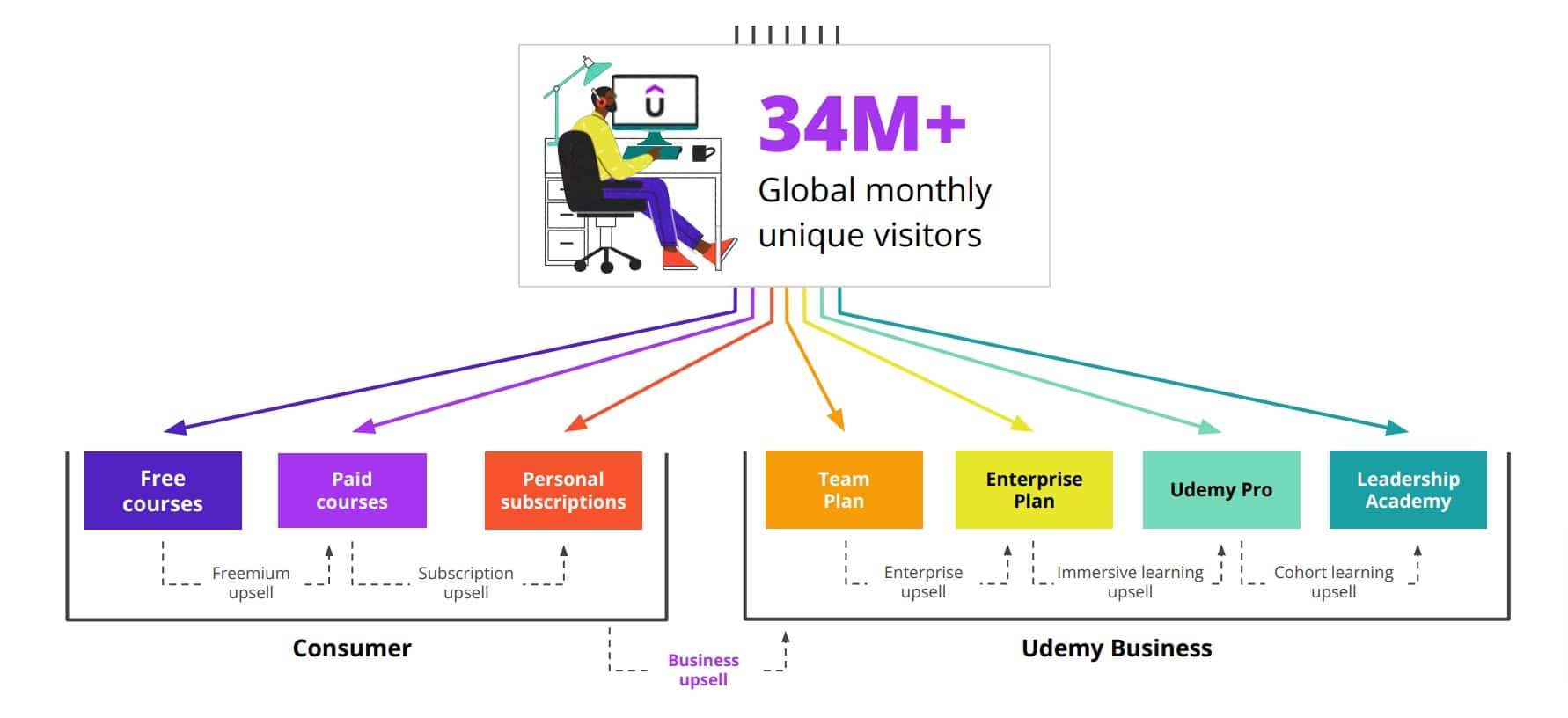
Most of us know Udemy as a place to find online courses. But Udemy’s business is split into two major segments: B2C (or Consumer) and B2B (or Enterprise). I will cover these two segments in detail later on.
But here is a quick summary of different Udemy products and services:
- Individual Courses: Udemy offers over 200,000 courses, which can be accessed either for free or through a one-time purchase. Interactive learning tools, such as quizzes and exercises, are included in the purchase, as well as lifetime access to course content.
- Personal Plan: Individuals can subscribe to Udemy’s Personal Plan for $30/month or $200/year, which provides unlimited access to over 8,000 courses.
- Team Plan: This is similar to Personal Plan but for Teams of 5 – 20 people. Udemy’s Team Plan offers access to all courses in the Udemy Business catalog for an annual subscription of $360 USD per seat.
- Enterprise Plan: Larger organizations can purchase the Enterprise Plan, which includes what the Team Plan has, as well as additional features such as advanced user management, API integrations, and advanced analytics. Pricing is based on volume and functionality and offered as annual or multi-year subscriptions.
- Udemy Business Pro: Udemy Business Pro is an add-on available to any Udemy Business enterprise license. It provides a deeper, immersive learning experience with assessments, labs, and workspaces to accelerate skill development in key roles like information technology, software engineering, and data & analytics. Pricing is based on contract length and number of seats.
- Cohort Learning: Organizations can purchase Udemy’s cohort-based leadership development platform to build leadership capabilities with a scalable, hybrid experience tailored to their needs. Subscription pricing is based on cohort volume and functionality. This is based on Udemy’s $30 million CorpU acquisition.
Udemy Revenues
| Total | Consumer | Business | Net Loss | |
| 2019 | $276.3M | $225.5M | $50.9M | -$69.7M |
| 2020 | $429.9M | $326.4M | $103.4M | -$77.6M |
| 2021 | $515.6M | $328.7M | $187M | -$80M |
| 2022 | $629.1M | $315.0M | $314.0M | -$153.9M |
In 2022, Udemy’s revenue experienced a 22% increase, totaling $629 million. The majority of this growth came from Udemy for Business (UB), which expanded by 68%, though this is a drop from the 81% growth recorded the previous year.
The future of Udemy seems to lie in UB, as the company’s consumer revenues have remained stagnant for the past three years. Despite experiencing a 45% growth in consumer revenues from $225.5 million to $326.4 million in 2020 due to the pandemic, growth has been negligible since then, with a 1% increase in 2021 followed by a 4% decline in 2022. Udemy attributes this decrease to negative effects from foreign currency exchange rates.
UB now represents 50% of Udemy’s revenue, up from 36% in 2021 and 24% in 2022. In Q3 2022, UB’s revenue exceeded Consumer revenue for the first time.
Udemy Revenues By Region
| 2022 | 2021 | 2020 | |
| North America | 256.5M | 199.3M | 168.6M |
| Europe, Middle East, Africa | 189.6M | 168.6M | 139.0M |
| Asia Pacific | 137.8M | 107.9M | 85.8M |
| Latin America | 45.1M | 39.9M | 36.4M |
| Total | 629.1M | 515.7M | 429.9M |
In 2022, 59% of Udemy’s revenue came from outside North America, with 84% of all user traffic originating outside the United States. No single country, other than the United States, represented 10% or more of the company’s total revenue.
Udemy Consumer
Udemy’s Consumer segment operates on two models.
In Udemy’s first model, learners can purchase a course outright and get lifetime access to it (in theory at least; I’ve noticed some of my older purchases no longer exist on the platform). A Class Central analysis shows that the Udemy courses prices range from $19.99 to $199.99.
However, Udemy is known for offering deals, and many learners purchase courses at a discounted rate. Looking at my own purchase history, I’ve bought 15 Udemy courses since 2013, and the most I’ve paid for a single course is $19 (which was the first course I bought).
Pricing also varies depending on location, with Udemy claiming to use machine learning algorithms to determine pricing on a per-country basis, considering factors such as content category, hours of content, course rating, and popularity.
In August 2021, a class action suit was filed against Udemy in California related to its pricing practices. According to the lawsuit, Udemy engages in false reference pricing, which is when a seller fabricates a false “original” price for a product, then offers that product at a substantially lower price under the guise of a sale.
Udemy resolved this lawsuit last year:
On December 13, 2022, the parties entered into a definitive settlement agreement for an immaterial amount
Class Central previously wrote about six deceptive marketing practices from education companies in China, one of which was about advertising deceptive discounts.
Udemy’s second model is a catalog subscription, first reported by Class Central. It costs $30 per month or $200 per year and gives learners access to 8000 courses (Udemy’s full catalog has over 200K courses). Unfortunately, Udemy didn’t share any numbers regarding subscriptions.
Another metric that Udemy shares is “Monthly Average Buyers”:
A buyer is a consumer who purchases a course or subscription through our direct-to-consumer offering. Monthly average buyers is calculated as the average of monthly buyers during a particular period, such as a fiscal year.
| Monthly Avg Buyers | Avg Revenue per Buyer | |
| 2022 | 1.336M | $19.5 |
| 2021 | 1.345M | $20.4 |
| 2020 | 1.439M | $18.9 |
| 2019 | 0.962M | $19.5 |
In 2022, an average of 1.336 million learners purchased a course on Udemy each month, slightly down from 1.345 million in 2021. Based on consumer revenues, we estimate that the average learner spent $19.5 in 2022, down from $20.4 in 2021.
During the second quarter of 2020, when quarantine measures were implemented worldwide, the monthly average of buyers surged to 1.773 million.
Udemy Business (UB)
| UB Customers | UB Revenues | UB ARR | |
| 2019 | 5,174 | 50.9M | 75M |
| 2020 | 7,300 | 103.4M | 138M |
| 2021 | 10,515 | 187M | 239M |
| 2022 | 13,920 | 314M | 372M |
In 2022, UB accounted for 50% of Udemy’s revenue, with $314 million in earnings. Its revenue growth for 2020, 2021, and 2022 was 103%, 81%, and 68%, respectively. It is expected that UB’s revenue will exceed that of Udemy’s Consumer segment in 2023.
Here is how Udemy defines it:
Udemy Business offers organizations access to more than 20,000 of the highest rated courses from our marketplace, equating to over 190,000 hours of content across 15 languages
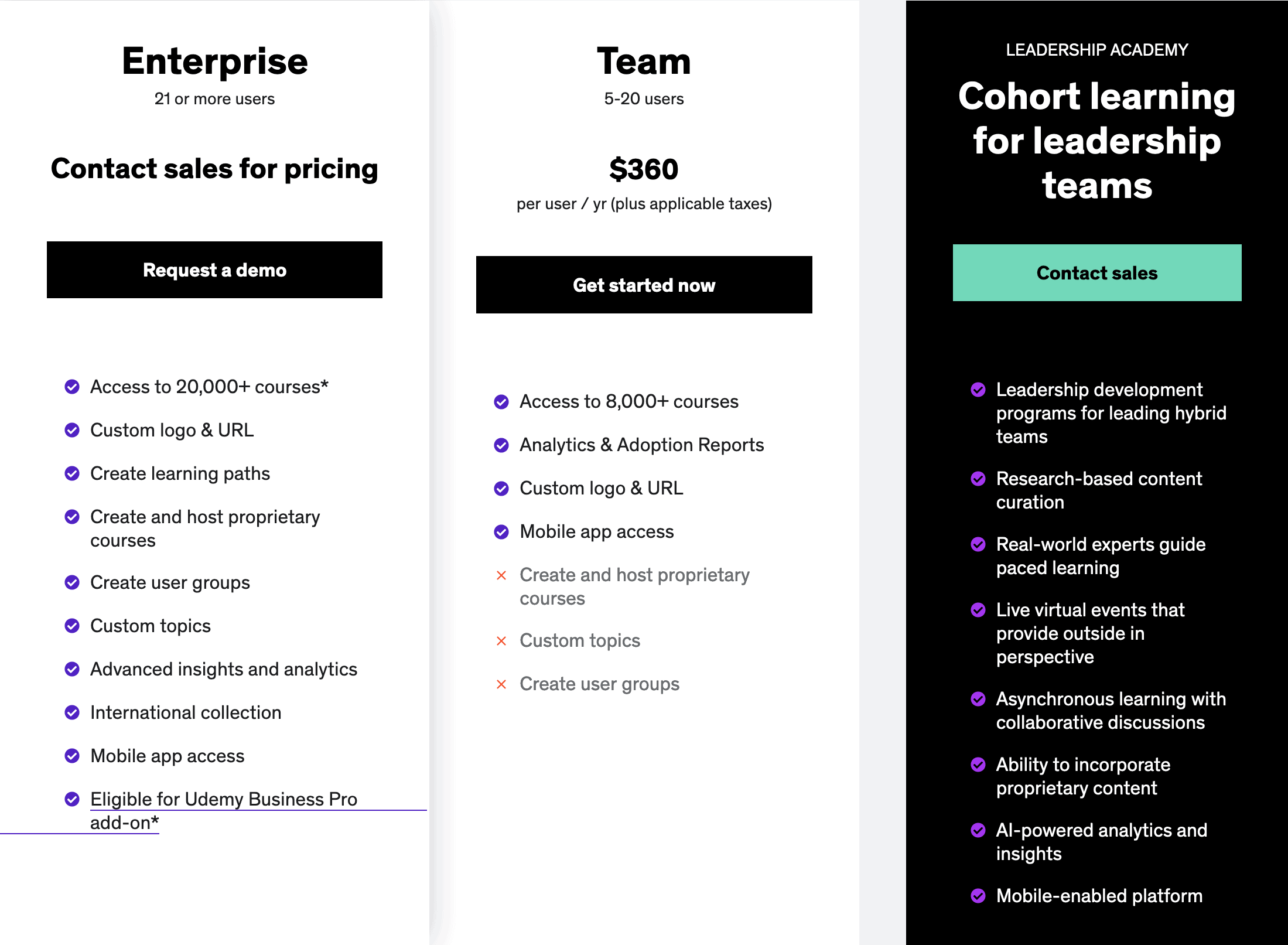
Udemy for Business (UB) segment is similar to the Personal plan, but offers a larger course catalog and is more expensive. In 2022, UB’s 20,000 courses generated the same revenue as 200,000+ courses in the Consumer catalog.
To incentivize instructors to contribute their content to UB, Udemy requires an exclusivity clause that prevents them from offering similar on-demand courses on competing platforms. Udemy believes this arrangement adds value to its offerings by increasing the amount of unique content and maintaining its roster of expert instructors.
Like for Coursera, the Business segment is more profitable for Udemy, with a 67% margin compared to the Consumer segment’s 53% in 2022. This is partly due to “lower content costs,” meaning instructors receive a smaller share of the revenues than in the Consumer segment.
Udemy grows its UB revenue by using a “land-and-expand” strategy, where it first acquires new customers and then nurtures relationships with existing ones. This has allowed Udemy to sell its service to multiple departments within a company and eventually to the entire organization as it proves its value and customers find new ways to use it.
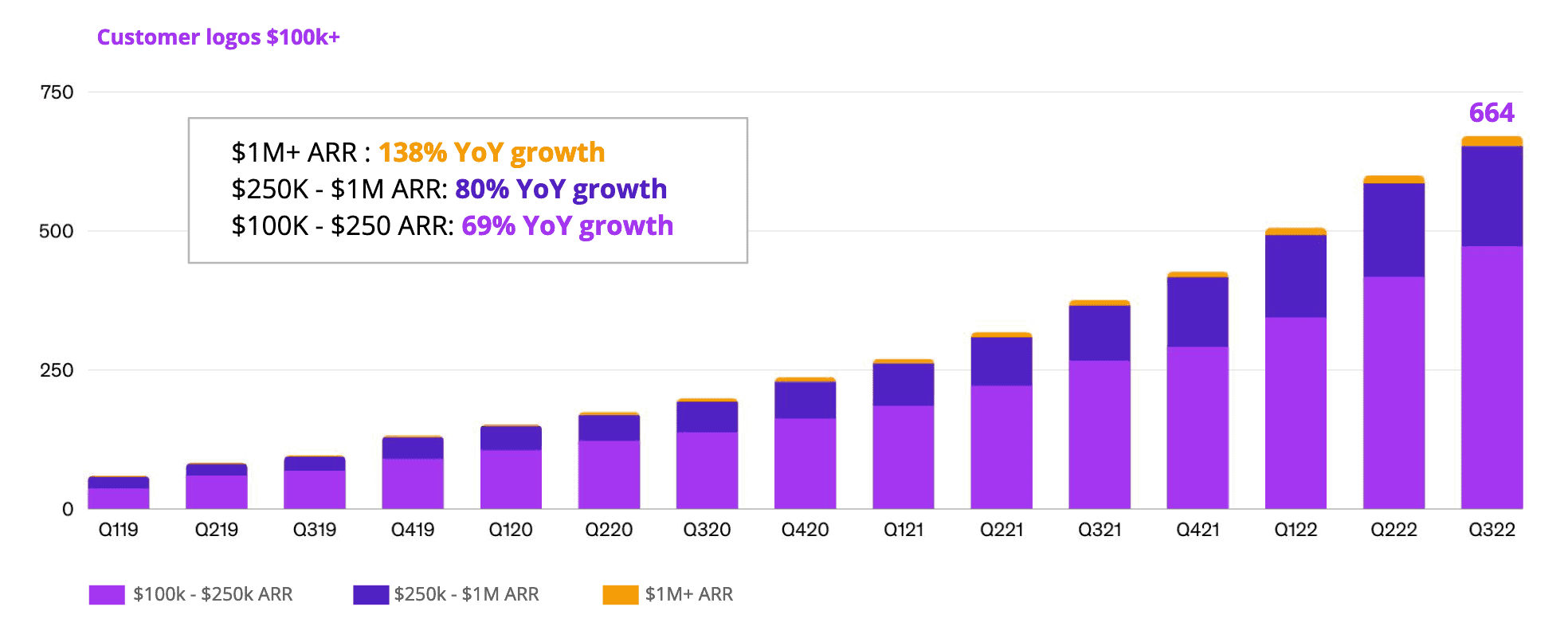
Udemy Instructors Payouts
| Instructor Payouts | Growth Rate | Revenue Growth Rate | |
| 2019 | 109.2M | ||
| 2020 | 161.4M | 48% | 56% |
| 2021 | 176.9M | 10% | 20% |
| 2022 | 192M | 9% | 22% |
Udemy boasts over 70,000 instructors, the majority of whom are from outside the US. Most of them earn very little.
Udemy is secretive about how much instructors make on its platform, often creatively expressing individual payouts while sharing cumulative annual payments.
In 2022, Udemy paid out $192 million to instructors, up from $109.2 million in 2019. However, this increase hasn’t kept pace with Udemy’s revenue growth, which grew by 22% in 2022 compared to 9% in instructor payouts. In other words, Udemy is sharing a smaller percentage of its revenue with instructors.
Udemy’s gross margin for 2022 was 56%, compared to 54% in 2021, primarily due to a shift towards the enterprise segment.
According to Udemy’s 2022 annual report, 19 instructors earned over a million dollars, while nearly 1,600 earned more than the “average annual income” in their home country.
However, it’s unclear how Udemy defines “average annual income,” and from the instructor’s perspective these earnings are not salaries but revenues. Instructors may have other expenses such as video editing or equipment purchases, and they may spend money on marketing their courses. Additionally, Udemy has many instructors who are course creation companies rather than individuals.
In summary, while it’s possible to make a living as a Udemy instructor, the vast majority of them earn very little, and only a small percentage achieve significant financial success.
This is further illustrated by the Udemy IPO filings:
In 2020, our paid instructors earned $161.4 million from Udemy for their courses, with average paid instructor earnings of $2,950 and over 9,000 global instructors receiving more than $1,000 in earnings.
I think around that time Udemy had 60,000 instructors, so the other way to put it is 85% of the instructors are making less than $100/month on Udemy.
The filings also revealed that a small group of instructors were responsible for the majority of enrollments. Specifically, 5% of the instructors generated 71% and 70% of paid marketplace enrollments during 2020 and the first half of 2021, respectively.
With Udemy’s growth in the enterprise segment, which has a limited catalog and fewer instructors, the distribution of revenue is expected to become increasingly skewed towards the top instructors. This means that the vast majority of instructors on the platform are likely to continue earning very little, with only a handful of top performers earning significant amounts.
Tags

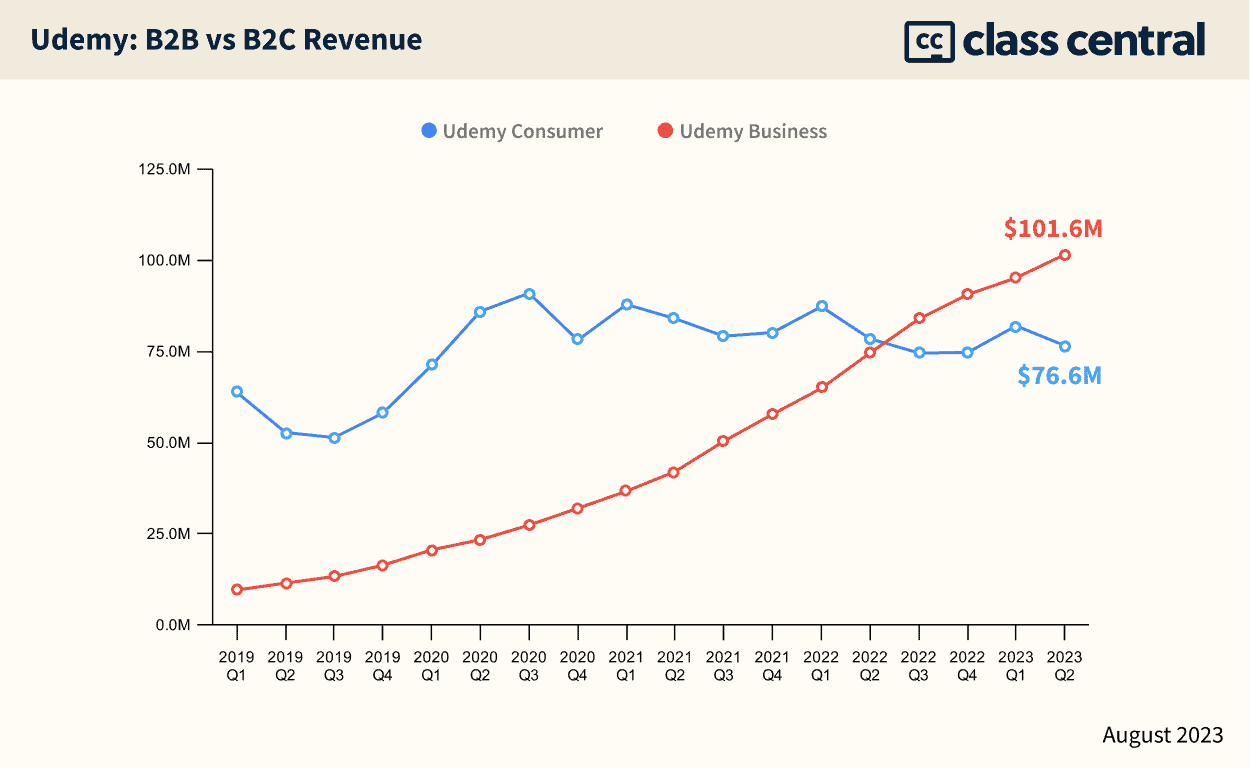
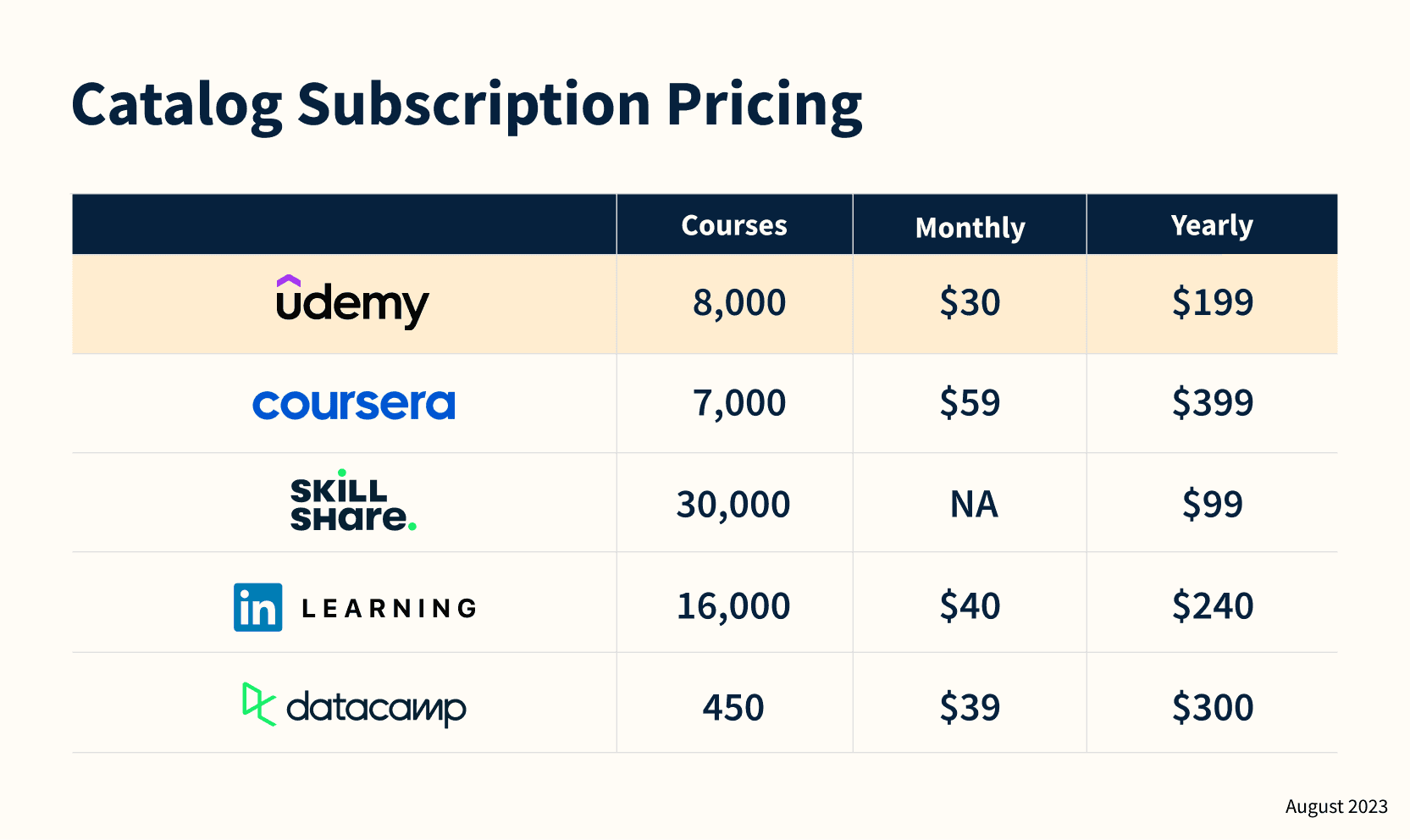






Venkata Desai
Thanks, Dhawal, for the insights into how Udemy works. As rightly said, the instructor on Udemy platform don’t make much money and added to that, instructors are supposed to sign the exclusivity agreement. I have used the content both as an individual and as an employee of a large corporation. There is hardly any change in content between B2C and B2B.
Surprising to know that, they are yet to become profitable despite paying very less to the instructors.
Jason
Very well researched! Thank you!